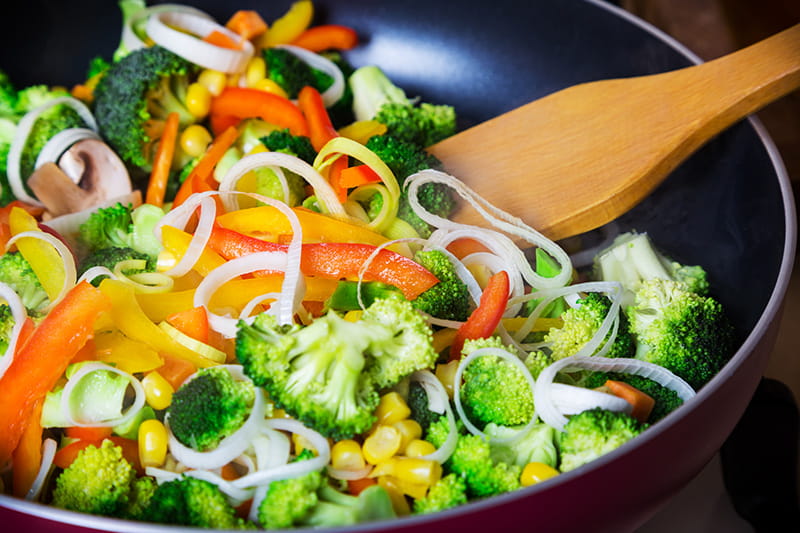Cooking Technique: Healthy Sautéing

Not a chef? Don’t worry – most of us aren’t.
Making a meal can seem pretty daunting, especially when you don’t have the gift of time. But cooking at home doesn’t have to be hard, and it sure doesn’t have to be fancy. There are fun ways to prepare a meal that will leave you, your family, and even your guests amazed at how good healthy, simple food can taste. So, think outside your microwave tonight and try this fun cooking technique – the “art” of sautéing.
Traditionally, sautéing uses fats and oils to cook vegetables, seafood and meats. Light sautéing uses just a small amount of liquid, like broth, wine, juice or even plain water. It seems like many basic recipes start with a sautéed onion. But not all sautéing is good for you. Who knew?
Here’s how to sauté the healthy way. And yes, it’s still going to taste awesome. We promise.
- Heat one to two tablespoons of low-sodium broth or water in a skillet over medium heat.
- Once the liquid begins to bubble, add the chopped or sliced onions and cook, stirring frequently, for about five minutes.
- Don’t stress if the onions start to stick to the pan. Just add a little more liquid and keep stirring. This will free the onions that got stuck to your pan and, believe it or not, those little sticky pieces can add delicious flavor to your dish. If your onions look like they’re starting to burn, just turn the heat down a little.
Look at that! Now you’ve started so there’s no looking back.
There are many ways you can sauté – starting with just vegetables and going from there. If you do start with a selection of veggies, it’s a good idea to cut them into the same size pieces. Sauté them just until they’re tender-crisp. Resist the urge to add more than a couple of tablespoons of liquid at a time, otherwise, you’ll just end up boiling your food.
Want to branch out even more?
Try sautéing meats! For meats like chicken breasts, chops, and steaks, start with a nonstick skillet lightly sprayed with cooking spray. Cook the meat over medium heat for about a minute or so on each side to brown it. Then add a few tablespoons of liquid to the pan (just like we talked about above) and cook until the meat is done. The great news is most meats will release some additional liquid as you cook, so you won’t have to add much at all. As the liquid starts to boil down, you’ll see it add a rich glaze to the meat. Sounds fancy, right?
Want to go bolder?
Think about fun flavor combinations, like orange juice with chicken or red wine with steak.
So that’s Sautéing 101. What are some of your favorite things to sauté? Share your ideas with us using #AddColor on our Facebook and Twitter pages.






